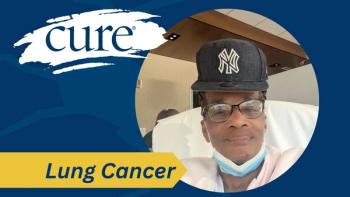
The Navigational Bronchoscopy in Lung Cancer
Transcript:
Philippa Cheetham, MD: Talking about treatment, it all starts at imaging, then a biopsy, then you have a diagnosis. For patients with early disease, localized disease, how have we moved forward in the management of lung cancer, say, compared to a decade ago? What are the big changes that you can report to us in how we manage patients?
Evan C. Osmundson, MD, PhD: I would say 1 very big important change is the more routine use of navigational bronchoscopy for staging patients. One of the things that we’re very careful of when we have a patient with early-stage disease is that we want to make sure the lymph nodes are clear. That can be done invasively, but more and more often we’re able to do it with procedures like EBUS [endobronchial ultrasound], navigational bronchoscopy even, to go out and biopsy the tumor.
Philippa Cheetham, MD: So, a CT scan alone is not enough to determine lymph node involvement?
Evan C. Osmundson, MD, PhD: No, it’s certainly not. We like to have pathology confirming lymph node involvement before we go forward and stage the patient, for sure. Certainly, navigational bronchoscopy and EBUS are very, very important and help us as a team to decide what the most appropriate therapy is for patients. From a radiation standpoint, some of the technologies that allow us to more precisely give a radiation dose to the tumor while sparing normal tissues have allowed us to escalate dose to ablative doses. This allows us to give SBRT [stereotactic body radiation therapy] or SABR [stereotactic ablative radiotherapy] to patients with early-stage lung cancer who are not operation candidates. This is a relatively new development, and I think that the data have borne out that this is a valid treatment option for patients who are high risk for lobectomy.
Philippa Cheetham, MD: You’ve talked about bronchoscopy, and we know that with CT scans, the imaging has improved. Even with these endoscopes that we use to look into various body cavities, the imaging has gotten much better in real time. Do you think that developments in bronchoscopy have aided diagnosis, or is it just that we can move faster once we’ve got tissue in the first place?
Evan C. Osmundson, MD, PhD: Advances in bronchoscopy have definitely aided in diagnosis and made the procedures more minimally invasive. They’re more sensitive, and they’re more specific.
Philippa Cheetham, MD: For patients who are going through a bronchoscopy, what can the patient expect? It’s a day-case procedure, yes?
Evan C. Osmundson, MD, PhD: Yes, typically it’s a day-case procedure. They’ll undergo sedation, intubation. Usually they’ll need a driver.
Philippa Cheetham, MD: In terms of the developments, we’re hearing a lot about moving from chemotherapy to targeted therapy. Do you think that in lung cancer and multimodal treatment, combining different drugs is the way forward?
Evan C. Osmundson, MD, PhD: Certainly, in more advanced disease. In early-stage disease, patients can typically be cured with surgery and adjuvant chemotherapy, surgery, or radiation alone. Now, one of the problems with early-stage disease is that there’s a significant number of patients who will fail distantly, and we’re not able to predict very well who those patients are. Combining certain agents—for example, immunotherapy agents or other targeted therapies—may be important in the future, and there are some ongoing early-stage trials looking at that specifically with radiation.
Transcript Edited for Clarity




